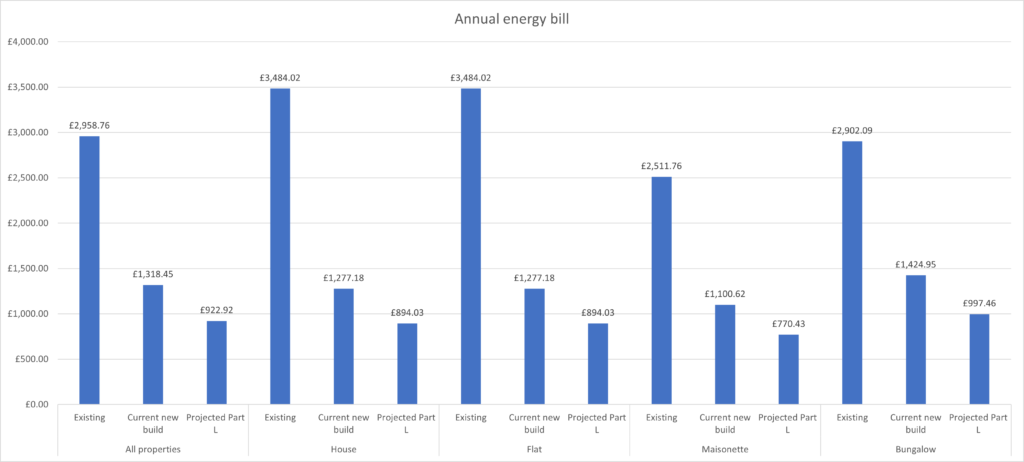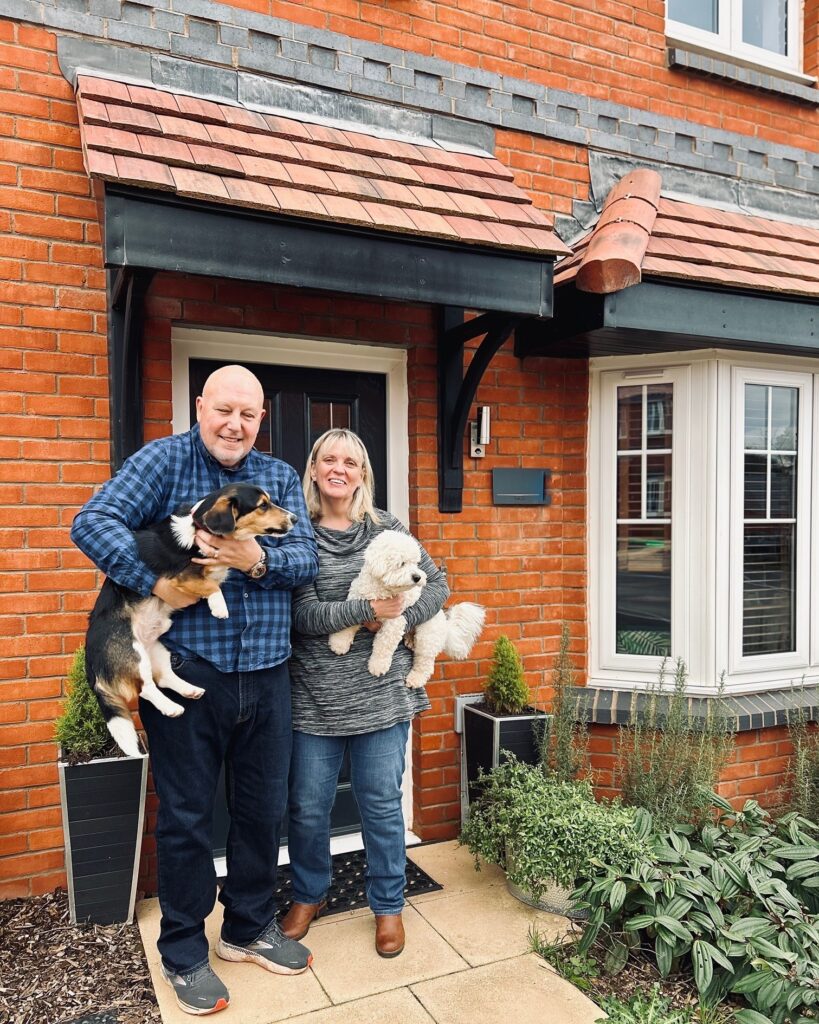Buying a new build home could save you thousands of pounds a year in energy bills compared to an older property – so with big savings and smaller carbon footprints, what’s not to like?
When starting out on your homebuying journey, one of the biggest decisions to make is whether to opt for an older property or a new build home. Some buyers prefer the look of an older home with period features, while others will want a brand new property with freshly installed kitchens and zero budget required for restoration works. One big deciding factor could be the huge savings you can make by living in an energy efficient new build compared to an older home. The recent Home Builders Federation (HBF) report shows that new builds are getting increasingly carbon efficient and could save homebuyers up to £184 a month in energy bills alone.

Why The Big Difference?
Conversations in politics have been dominated by household energy usage in recent years, and we’ve seen big pushes by the Government to meet net zero targets. While owners of older properties face costly and sometimes intrusive measures to reduce the carbon emissions of their homes, new builds are built to ever-evolving standards. And this has had a big impact on homebuyers’ wallets. The HBF’s first Watt a Save report was published in 2022 and compared the energy efficiency of new builds compared to older properties. That report found that the home building industry collectively reduced carbon emissions by 500,000 tonnes to help households save large amounts on their annual energy costs. The latest report, which gathered data up until the beginning of this year, details the difference in energy usage, energy bills, carbon emissions, and EPC ratings across the different types of homes. Some of the key findings are highlighted below.
Greater Efficiency And Lower Emissions
The average new house emits just one-third of the carbon of typical older houses, with each house saving 2.8 tonnes of carbon per year. Buyers of new build homes in 2023 reduced carbon emissions by 500,000 tonnes. The amount of greenhouse gas emissions that a property produces depends on several factors, including the way a home is powered (gas or electricity), the efficiency of items such as boilers, and how well the property is insulated. When buying any home, the property’s energy performance certificate (EPC) must be made available for potential buyers to view. This indicates how efficiently a property runs – including in terms of energy and insulation – and helps buyers to make informed decisions. Homes are rated on a scale of A-G. In 2023, 85% of new builds had the highest EPC ratings – A or B. However, less than 5% of older properties have a rating of A or B, and it’s common for the EPCs to be much lower – indicating that a budget would be needed to replace costly features such as heating systems or just to keep the home warm in general.
Big, Big Savings
Of course, the more energy-efficient a home is, the cheaper it is to run – and this is evident in the huge savings recorded in the report. The average new build homebuyer saves £137 a month on energy bills – a huge £1,640 a year, compared with purchasers of equivalent older properties. This saving rises to £184 per month for houses, rather than flats or bungalows, totalling £2,200 a year. Going forward, the newest homes, built to Part L regulations (from June 2023) will save even more, with an average saving of up to £2,600 for houses specifically. These differences in energy bills have significant implications for homeowners’ monthly outgoings, their subsequent quality of life, and their savings pots.
The Future
Even with energy prices beginning to fall after the peaks seen in recent years, new build homeowners will still save thousands every year. The home building industry continues to work towards the Future Homes Standard. This means more properties being created to even higher energy efficiency standards. It is expected that from 2025, the average new build energy bill will be cut by 70% compared to that of older counterparts. Each person’s homebuying journey is unique and filled with personal preferences, including the preference in the style of home. These findings provide potential homebuyers with a wealth of information around the huge savings they can make – and the potentially surprising differences between the homes available.
Case Study

When they were looking for their forever home, saving time and energy on DIY was a priority for Ken and Michelle Apple-Perry – the fact that it was net zero was a bonus Although the couple are not first time buyers, their story applies to everyone who is buying a home and wants to save energy. The couple relocated from Maidenhead in Berkshire to a new build home from the Edenstone Group at St Mary’s Garden Village in Ross-on-Wye. In doing so, they’ve reduced their energy bills to just a fraction of what they were paying previously – despite moving to a larger property. Plus, they can earn from any surplus solar generation they export back to the National Grid. Michelle explained, “As recent newlyweds, we wanted somewhere that would be our together, forever home. We had a tiny two-bedroom maisonette so wanted something more spacious, and closer to where my daughter lives.
We were specifically looking for a new build for the convenience. I’d bought a new build before and liked the idea of a 10-year warranty and didn’t want to spend a lot of time on repairs that an older property was likely to need.” They chose a three-bedroom semi-detached Chepstow-style property which ticked all their boxes. “The fact that it was net zero was an added bonus. We liked the idea but didn’t realize we could get something as advanced as this within our price range. It has solar panels with a battery backup. Everything is electric. We have ceramic panels in the ceiling rather than radiators and a water tank that heats up between 3 am and 6 am, when electricity is cheaper.”
Their home is part of Edenstone’s wider ambitions to move to net zero energy across all its developments by 2025, thereby reducing energy bills for its customers. Along with solar panels, the couple’s home also includes the Wondrwall home automation and energy management solution. Initial indications are that the system is already outperforming average predictions, generating more energy than it consumes. “The first month the solar panels were connected our energy bill was £20 and the last one was £50, but the weather hadn’t been so good. We know in the winter we’ll pay more but we don’t expect it to be more than £100 a month.
On our previous property, we were paying about £200 a month for gas and electricity and that was with solar panels too.” Edenstone Operations Director Chris Edge said, “We’re extremely proud of our green credentials. We built our first zero-carbon home in the Vale of Glamorgan in 2019 and are working hard to realize a long-held ambition of leading the development of mainstream net zero energy homes at scale. As part of our commitment to creating sustainable communities, alongside new homes at St Mary’s Garden Village, we’ve also built a net zero energy community hub. It should produce all the energy it requires and feedback any surplus into the grid.” There’s a range of properties at St Mary’s Garden Village, from two to four-bedroom styles, available from the Edenstone Group’s two housing brands – Edenstone Homes and Bluebell Homes




